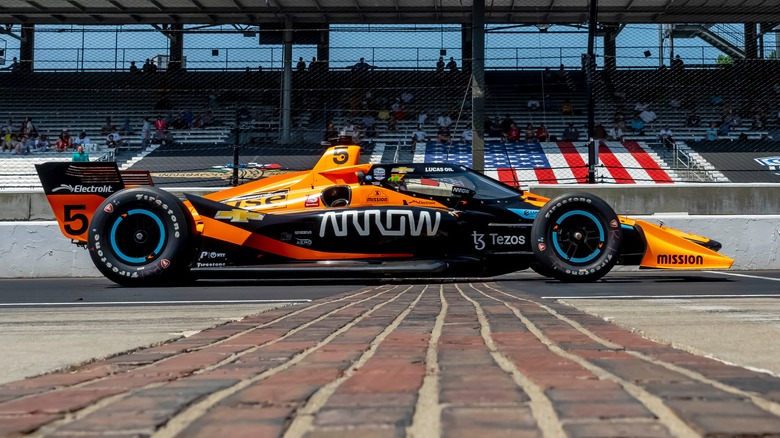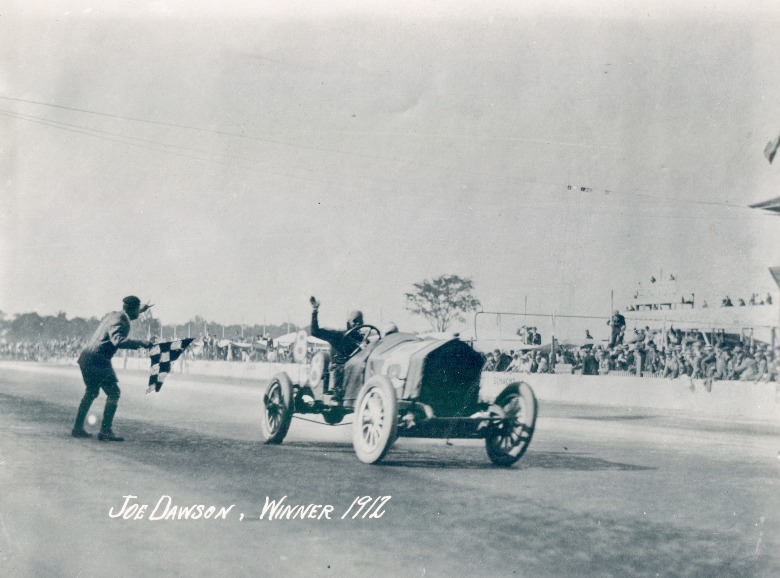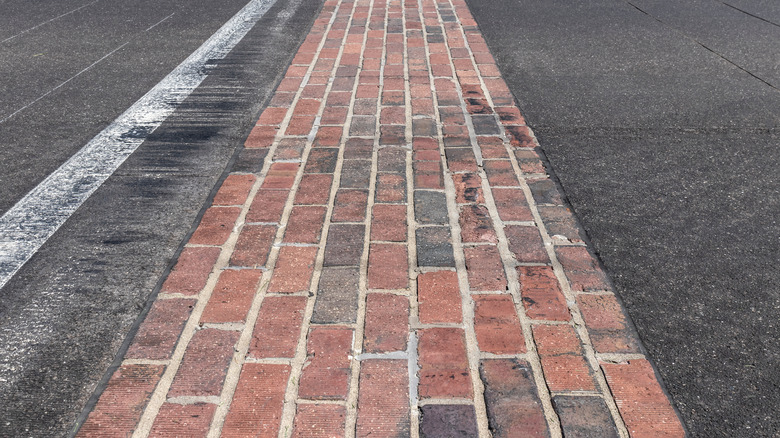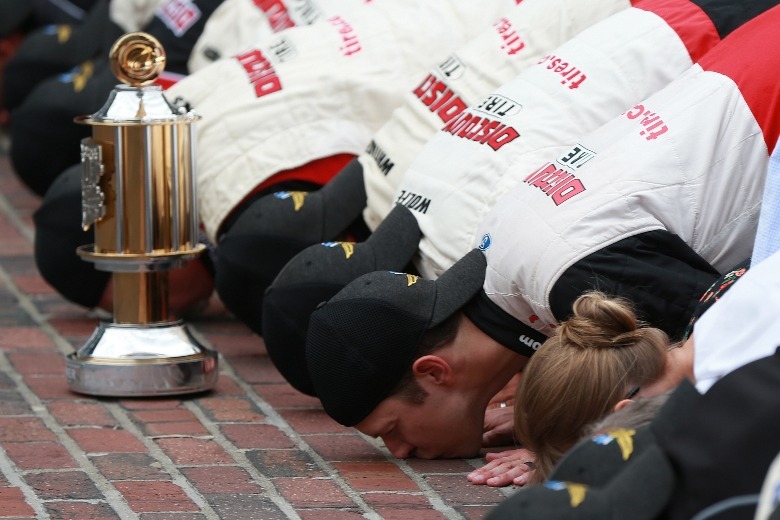Why The Indianapolis Motor Speedway Is Called The 'Brickyard'
The weekend before Memorial Day marks the annual Indy 500 of the IndyCar Series, at no other than the Indianapolis Motor Speedway (IMS) in Indiana. The IMS racetrack has the largest seating capacity among other international venues, capable of accommodating over 250,000 racing fans.
Automobile dealership and headlight pioneer Carl G. Fisher first imagined an oval track with taller seating for spectators in 1905 after noticing the rising popularity of automobile racing. Fisher shared his idea with partners James Allison, Arthur Newby, and Frank Wheeler to invest $250,000 in what would become the Indianapolis Motor Speedway today.
The inaugural race at the IMS' 2.5-mile banked oval track was in August 1909. However, the event didn't go smoothly. Instead of concrete, the vintage Indianapolis Motor Speedway's road surface featured a tacky blend of gravel, tar, limestone, and 220,000 gallons of asphalt oil, all layered manually by 500 workers and 300 mules before steamrolling the pavement to form a solid mass of road.
The result is racecar drivers — who back in the day were pushing the boundaries of speed on cars with minimal safety and comfort aids — ended up with shattered goggles, bloody cheeks, and gooey dirt as the track fragmented in the turns. Five people died at the inaugural event, and Fisher closed the racetrack pending a boycott from the AAA.
The Brickyard was born
Fisher and colleagues knew something needed to change. After track tests showed that bricks offered more traction than gravel and were more durable than concrete, the men decided to transform the Indianapolis Motor Speedway into a brick-laden track. Local businesses in Indiana supplied the men with over three million bricks for the repaving. The speedway re-opened in December 1909, and immediately earned "The Brickyard" moniker.
The Indianapolis Motor Speedway kept its brick track until 1938, when the entire racetrack gained a new and fresh layer of asphalt. However, a 36-inch strip of the original brick road remains at the start/finish line.
Famously referred to as the "Yard of Bricks," there's a tradition among NASCAR and Indy 500 winners to kneel before the Yard of Bricks and plant a kiss on the surface as a homage to the speedway's illustrious history. The first kiss was by NASCAR Champion Dale Jarret in 1996, and the tradition held on ever since.



